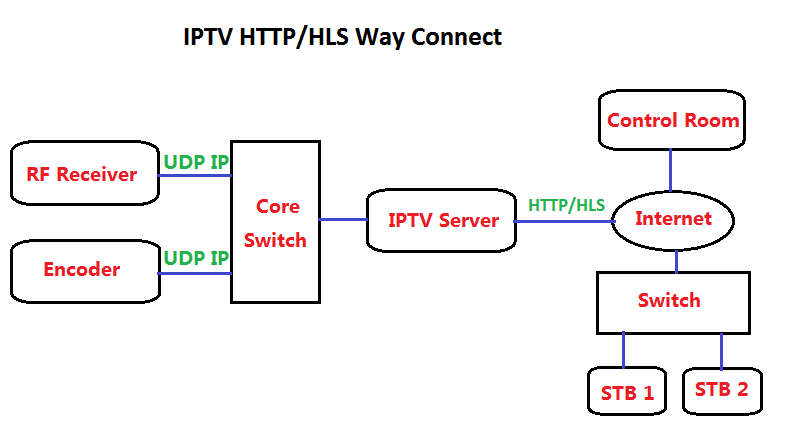There are two types of IPTV networking solutions: UDP and HTTP/HLS.
In UDP scheme, the output of the signal source is directly passed through the switch to the STB, and the server only serves as the management and VOD service. The CPU resources consumed mainly come from the management of STB and VOD services.
In HTTP/HLS solution, the signal source will go to the server first, and the server will convert the input ip stream to HTTP/HLS output. The CPU resources consumed mainly come from management and live request.
Live streaming resource consumption
Resource consumption mainly comes from the protocol of the input programme and the number of inputs, as well as the number of terminal set-top boxes.
Live Streaming Bandwidth Calculation
UDP way:The total bitrate of UDP input is its bandwidth. For example, if there are 50 programmes and each programme bitrate is 8Mbps, the total programme bitrate is 400Mbps.So the bandwidth is 400Mbps.
HTTP/HLS way:The largest bitrate in the programme multiplied by the number of terminals is the total bitrate.For example,the maximum bitrate of the programme is 8 Mbps,600 terminal set-top boxes,the total bitrate is 4.8 Gbps. Then the server needs to be configured with 10G optical port output.
Other differences between UDP and HTTP
- UDP can only be used for local area networks, and IGMP Snooping V2 is configured for Layer 2 switches. Fiber to home, GPON, and EPON all belong to local area networks.HTTP, can be accessed over the Internet.
- UDP, live broadcast can be received from the external Internet network link to play.HTTP, live streaming can only come from the server.
- If the terminal is above 1200, it is recommended to choose UDP to save bandwidth and Server Configuration.






